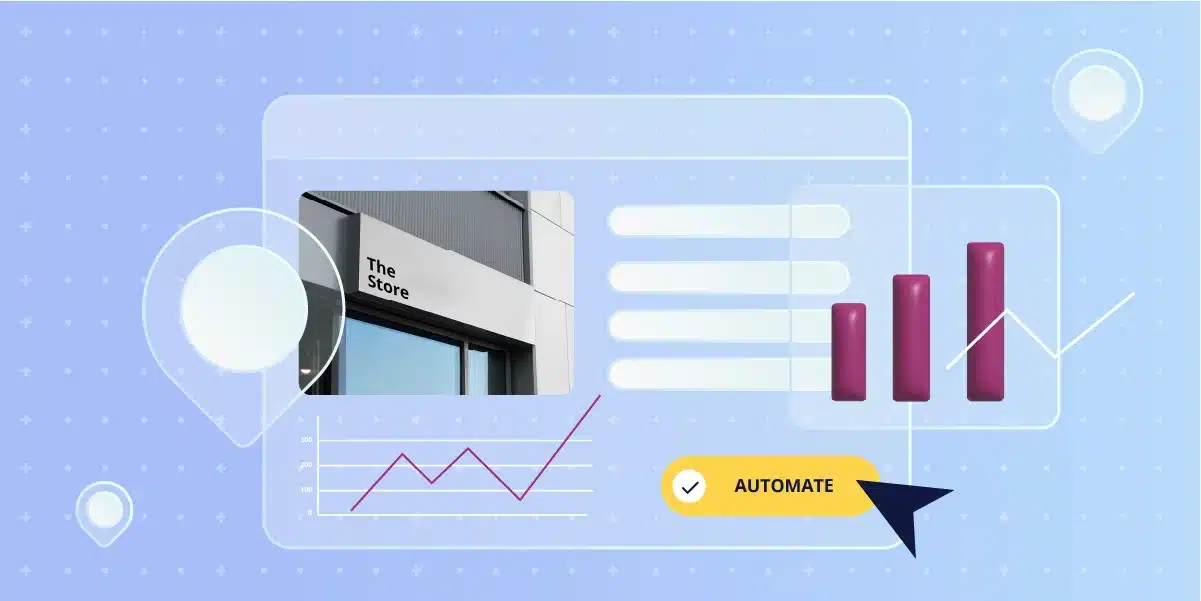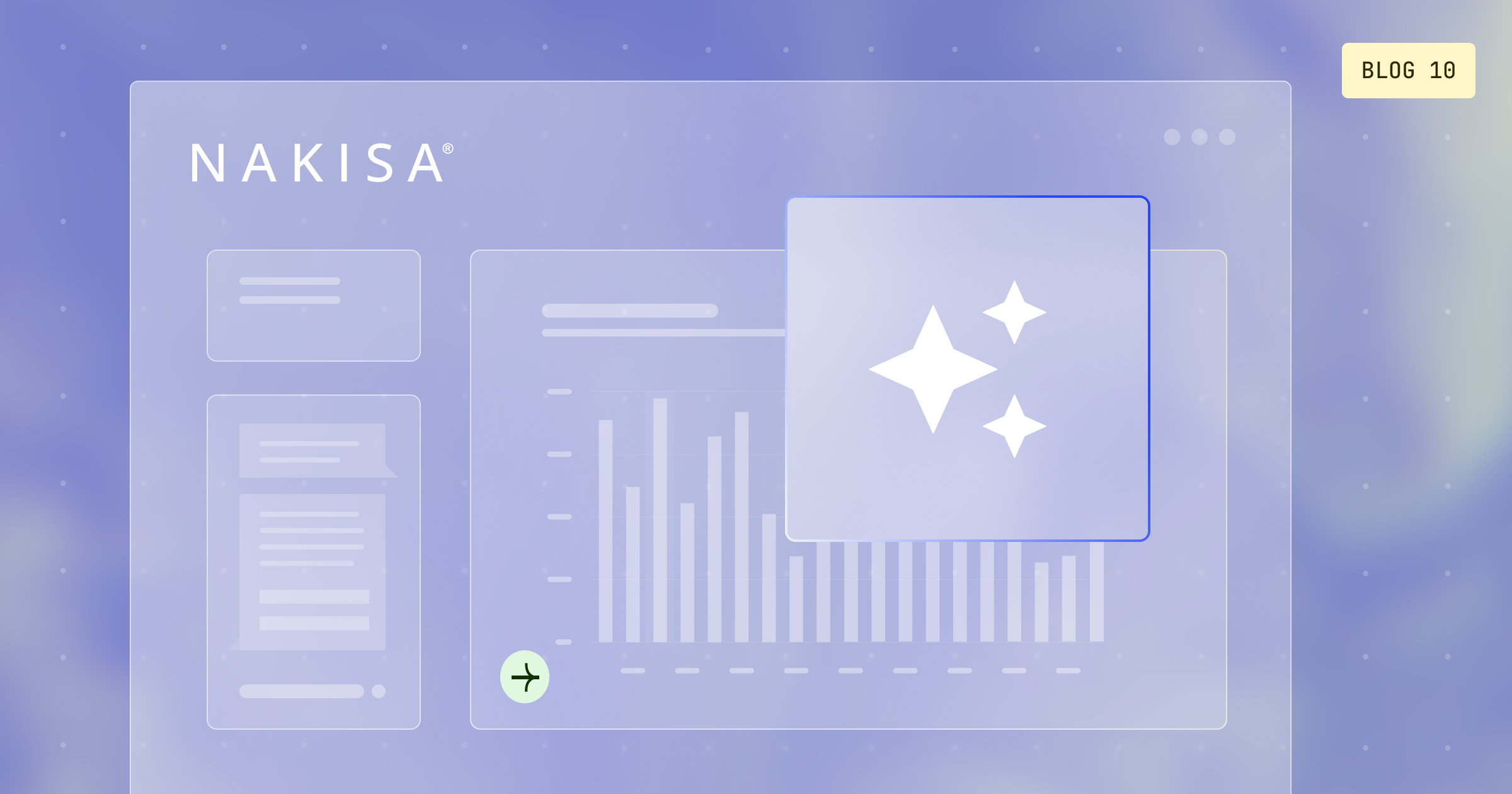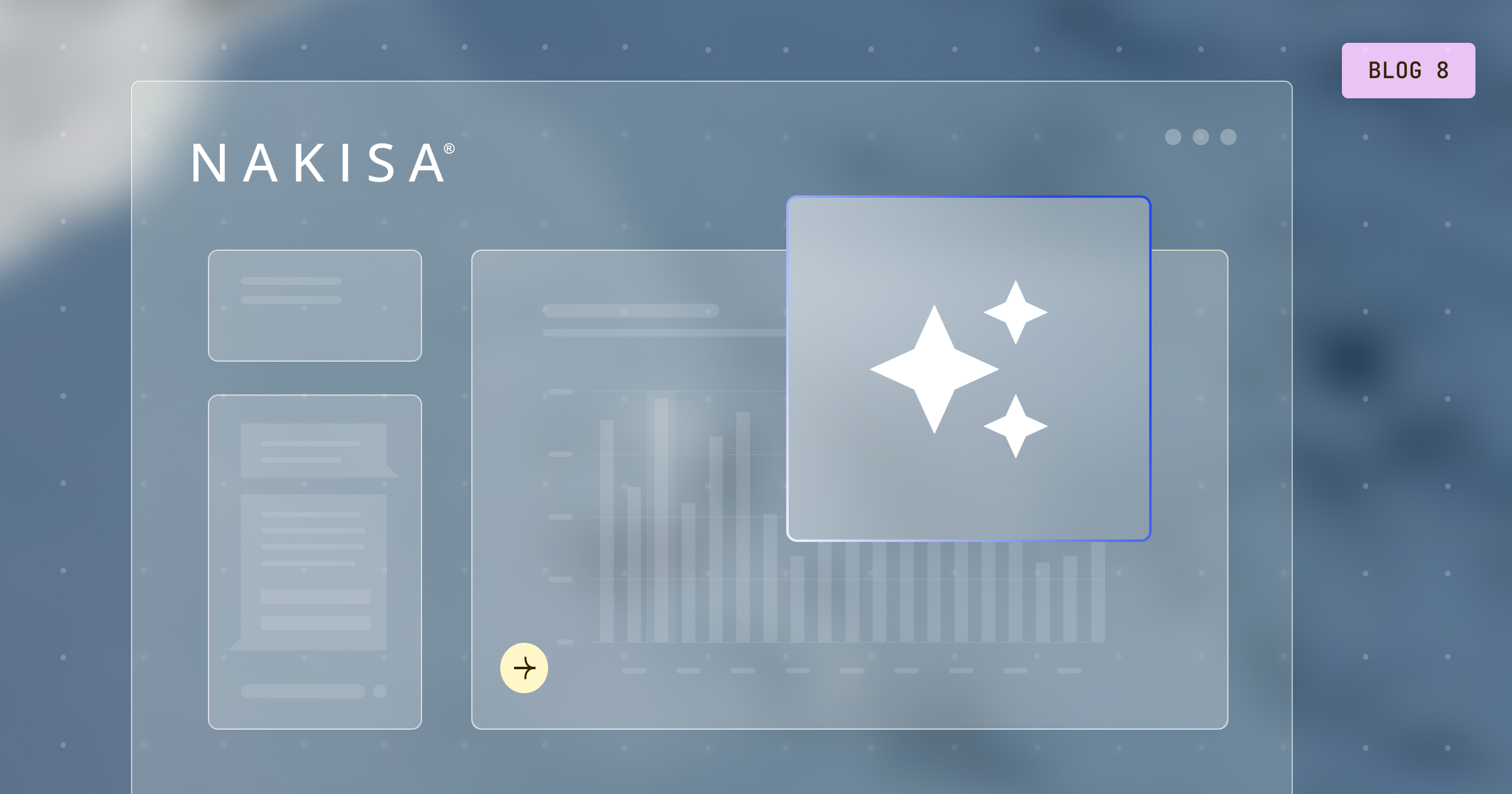Technology has revolutionized the commercial real estate industry in many ways, from streamlining the sales process via e-commerce to identifying better opportunities via AI-enhanced analytics. Digitalization of real estate operations is one of the top 5 commercial real estate trends in 2023-2024. But how exactly can technology generate quick wins and provide professionals with the insights and agility to navigate unstable market dynamics? What are the best practices for optimizing commercial real estate portfolios and automating the real estate workflow? Read on to discover the answers given by Nakisa’s real estate experts!
When we speak about real estate technology, we need to mention property technology or proptech. It comprises all software that allows professionals to buy, sell, rent, invest, and manage property, and to analyze real estate data. Given the value of these activities, it’s unsurprising that the proptech market is now estimated at $18.2 billion and is expected to reach $86.5 billion by 2032.
Among various types of proptech software, commercial real estate (CRE) software is particularly interesting due to the growing complexity of CRE needs. Recent accounting compliance standards required detailed and complicated real estate lease management and reporting to become even more so. This in turn increases challenges for global enterprises that manage a large number of leases across multinational markets with various currencies under different accounting standards. Percentage rate or CPI rent for retail, year-end reconciliation for CAM, taxes, and insurance, and other complex calculations often have errors, especially if everything needs to be done manually or with legacy software. Accordingly, 43% of companies expect they will need more support for CRE operations over the next three years and are looking for powerful proptech software. It can not only reduce errors and work duplication but also help property managers, lease administrators, and business leaders optimize their operations and better adjust their CRE strategy to unstable markets.
Let's see how exactly CRE software can help you achieve this.

1. Data management in real estate: centralization and analytics
Gartner reports that organizations believe inaccurate data can cost businesses an average of $15 million per year. But how to manage the data efficiently? You need two things: a centralized and regularly updated database and the ability to slice and dice data according to your day-to-day operational and analytical needs.
Most enterprises keep their real estate data in ERP systems (usually SAP or Oracle), or other siloed in-house databases created many years ago. Companies often house their commercial real estate data in multiple different locations, which ultimately wastes time and increases errors during validation and reconciliation tasks. Even when companies have a single source of real estate asset data, they may not be able to drill down into the data, which makes it hard to interpret numbers or get any actionable items.
Modern CRE software can connect multiple data sources, including ERP systems, isolated databases, or data from other SaaS tools. For example, your company can integrate data from point of sale (POS) systems with your real estate software, so that sales and revenue data is shown alongside real estate costs for each location. This way, your team can have more insights into the profitability of specific stores and decide whether you need to expand or reduce square footage, close a store, or open a new one.
For example, POS data may show you that your most profitable shops are in residential neighborhoods and have a pick-up section. This insight may impact not only your commercial real estate strategy but perhaps also transform your whole business strategy. Getting data on income and expenses out of silos allows you to see the bigger picture and leads you to more creative and successful business solutions.
Of course, once you gather all your commercial real estate data in one place, there is a big chance of getting lost in all your numbers and information. To avoid confusion and achieve efficient data management in real estate, it’s crucial that the software you choose can visualize and manipulate data. Usually, CRE software offers automatic pre-set reports and dashboards with the possibility to configure them to your company’s needs and create new reports with custom fields. Here are just some examples of out-of-the-box reports that should be available from Day 1 to boost your data analysis in real estate (ask your vendor for them by name):
- Year-end CAM reconciliation
- Percentage rent
- Critical dates
- CPI indexation
- Currency translation
- Financial obligation
- Occupancy cost
- Rent table & rent roll
- Tax and insurance
- AP/AR payment
- Cash flow
- Fiscal/calendar
These reports should further be bolstered by machine learning so that the analytics provide deeper insights into current trends in the commercial real estate landscape. Obviously, legacy real estate management software does not offer fine-grained data analytics.
Modern CRE software centralizes its regularly updated client data, it usually has notification functions that remind property managers and lease administrators about any upcoming event or deadline. With thousands of leases, it is easy to miss a deadline, which costs the business a lot of money. Deadline notifications and reminders are extremely valuable.
Our clients have been saving millions of dollars annually by automating their commercial real estate with NRE. Want to know how much money your organization could save with the right CRE software?
Summary: What are the benefits of centralized data for real estate management?
You get:
- A single source of truth that is always up-to-date and accurate via convenient integrations with ERPs and other SaaS (e.g., POS systems). You can follow the version history for leases and contracts with full ITGC controls. There’s no time wasted verifying whether disparate data streams are correct.
- Easy analysis of large volumes of data. Advanced analytics tools and machine learning help identify trends, patterns, and insights, and enable you to take proactive business decisions instead of reactive ones.
- Management of critical dates, lease expirations, and rent escalations. Instead of paying fees for missed deadlines, that saved money can be invested instead in revenue-generating activities.
2. Automation of real estate manual processes and calculations
Manual lease entry, contract modifications, and calculations can be a nightmare. The magnitude of manual errors shouldn’t be underestimated: CCIM Institute states that errors made in the first year of a 15-year lease are likely to be replicated for the next 14 years. Fortunately, these processes can be automated to run correctly with the right proptech software. Automation in property management eliminates human errors and saves many hours of work for commercial real estate professionals
For large enterprises, it is important to make sure that their proptech software can handle mass operations, including mass contract uploads, mass revisions, and modifications, along with batch jobs such as journal entry postings. Real estate automation can only work well if you can create, renew, modify, calculate, and end multiple leases and not one by one.
What’s more, commercial lease contracts are rarely simple. Often, they include clauses that are sensitive to market fluctuations, such as inflation or company revenue, in the sales-based rent. Modern CRE software has these industry-specific fields and can accurately and automatically calculate the impact of these operations on values, while legacy software simply relies on manual calculations for its input. Similarly, the value of sales-based rent with multiple product categories, CPI rent, year-end reconciliations, rent cost increase, and other calculations can be easily automated as well. In any good proptech software, you just need to enter the terms and conditions of the contract into the software or push this information through ERP or API integrations.
Let’s look at two simple examples: sales-based rent and rent cost increase. While dealing with sales-based or percentage rent, the landlord and tenant need to agree upon minimum base rent, breakpoint (natural or artificial), and percentage. Once you have your contract with these conditions, you can enter the numbers into modern real estate software and let it automatically calculate your percentage rent based on data from the POS systems. You can track all the scheduled transactions and monitor them to understand whether the conditions are profitable (for you especially). You avoid the need to calculate the percent rent manually.
Or let’s imagine that you have a rent price increase of 10% after the first year of the lease and 15% after three years. Once you enter these conditions into the appropriate fields of modern real estate management software, it will automatically calculate the price and schedule payments for upcoming months and years. You won’t need to remember this price increase; it will be automatically added to your scheduled payments once the time comes. You can always review and change terms and conditions for each lease and review the version history and the evolution of the lease – this can help with negotiations and future site selections.
Technology-driven automation streamlines mass processes and calculations in CRE operations. Scheduled payments, allocating costs across multiple vendors, batch operations, common area maintenance (CAM) reconciliations, and more day-to-day processes can be automated, simultaneously reducing human error and saving time. Automation in real estate ensures accuracy and consistency in financial calculations, lease administration, and reporting, improving efficiency and productivity.
Explore how Nakisa automates your real estate lease management and optimizes your portfolio for maximum profitability!
Summary: What are the benefits of real estate process automation?
- Automation in real estate reduces manual errors and allows professionals to spend more time analyzing their data rather than doing tedious calculations by hand.
- Mass operations such as entry postings, renewals, modifications, and closures are done faster and save many hours of human labor.
- Automated complex calculations like sales-based rent, CPI rent, or CAM year-end reconciliations are done easily and in exact accordance with contract obligations and legal requirements.

3. Fluid collaboration between real estate and accounting departments
Large enterprises have complex departmental structures to operate more efficiently. However, it is important to organize knowledge and data sharing between departments to avoid silos and duplicated work.
Lease managers, real estate managers, and their accounting teams often lack streamlined communication and collaboration. This is counterproductive since these teams need input and approval from each other to proceed with their work. Slow collaboration between these departments can not only lead to delays but also contribute to lost revenue. For example, we have often seen accounting teams pay for leases that were closed months prior because they weren’t informed about their termination.
When you work in a large enterprise, it is hard to make these miscommunications and errors visible. However, leveraging current technology helps. Having one source of truth for all teams and allowing them to collaborate in a single software with dedicated and tailor-made workflows can be a game-changer.
Before, there was a lot of work duplication; accountants needed to manually add information to their general ledger, and real estate professionals added the same data in their separate property management systems (database or legacy software). However, with a single source of truth, once a property manager adds the lease contract information, it is automatically available to the accounting team. Using CRE software, when a property manager adds a new lease contract, all the information can be transferred to the accounting team, pre-formatted under the right categories and sub-ledgers, simply awaiting their approval. When it’s approved, the property manager gets a notification, and the contract data is saved in the General Ledger of the ERP system for further use. There’s no duplication of manual data entry, only a streamlined workflow.
Another crucial example where real estate and accounting teams need to collaborate side-by-side is in compliance. Accounting teams need to make sure that property managers provide all the necessary information for real estate lease assets according to the correct accounting standard. The right proptech software consolidates data into a single source of truth for both teams and would automatically format the lease contract data entered by property managers to the appropriate accounting standard. Accountants can then complete reports more quickly and ensure that the standards required by compliance are accurately followed. Month-end closes and audits become much faster and more efficient as an additional benefit.
A word of caution should be added here: for such smooth collaborations to happen, it is not enough to just use any one single software for both teams. Sometimes companies ask real estate professionals to use solutions designed for accountants, and this works poorly. We cannot forget that real estate professionals and accountants have different goals and require different features to achieve them. For example, for a property manager, it is important to know the exact square footage and type of lease (warehouse, store, or pick-up point), whereas for an accountan,t it is more important to ensure compliance and regular payments. That’s why you need to make sure that the software you choose will not only offer data centralization but also have all the features crucial to both teams.
Summary: What are the benefits of facilitating smooth collaborations between the real estate and accounting teams?
- Smooth data exchange between teams ensures accurate financial reporting, compliance, and forecasting. It reduces manual errors and work duplication.
- Less time is wasted on chasing people from another department. The software notifies people about the need for approval and when it is received.
- No cost is incurred from paying for closed leases.
Looking for the right Proptech software for your enterprise? Consult our Real Estate Software Buyer Guide and RFP Checklist (Features Template) to compare different software vendors!
Conclusion
Commercial real estate teams need to leverage proptech to keep up with the growing needs of the industry. Data centralization and analysis, automation of real estate operations, and fluid collaboration across departments play a crucial role. Empowered with real estate software, CRE professionals can greatly optimize operations, reduce costs, and make informed decisions, which is crucial during challenging times.
We at Nakisa offer the expertise and tools to optimize commercial real estate portfolios and operations. Our team of commercial real estate professionals has developed both depth and breadth of experience from working with Fortune 1000 companies like Walmart, Nestle, Danone, and 3M for many years. The insights we can provide you about how to choose and use the right commercial real estate software can fully optimize your day-to-day real estate management operations and provide data-driven business insights to drive your productivity and, most importantly, your profitability.







